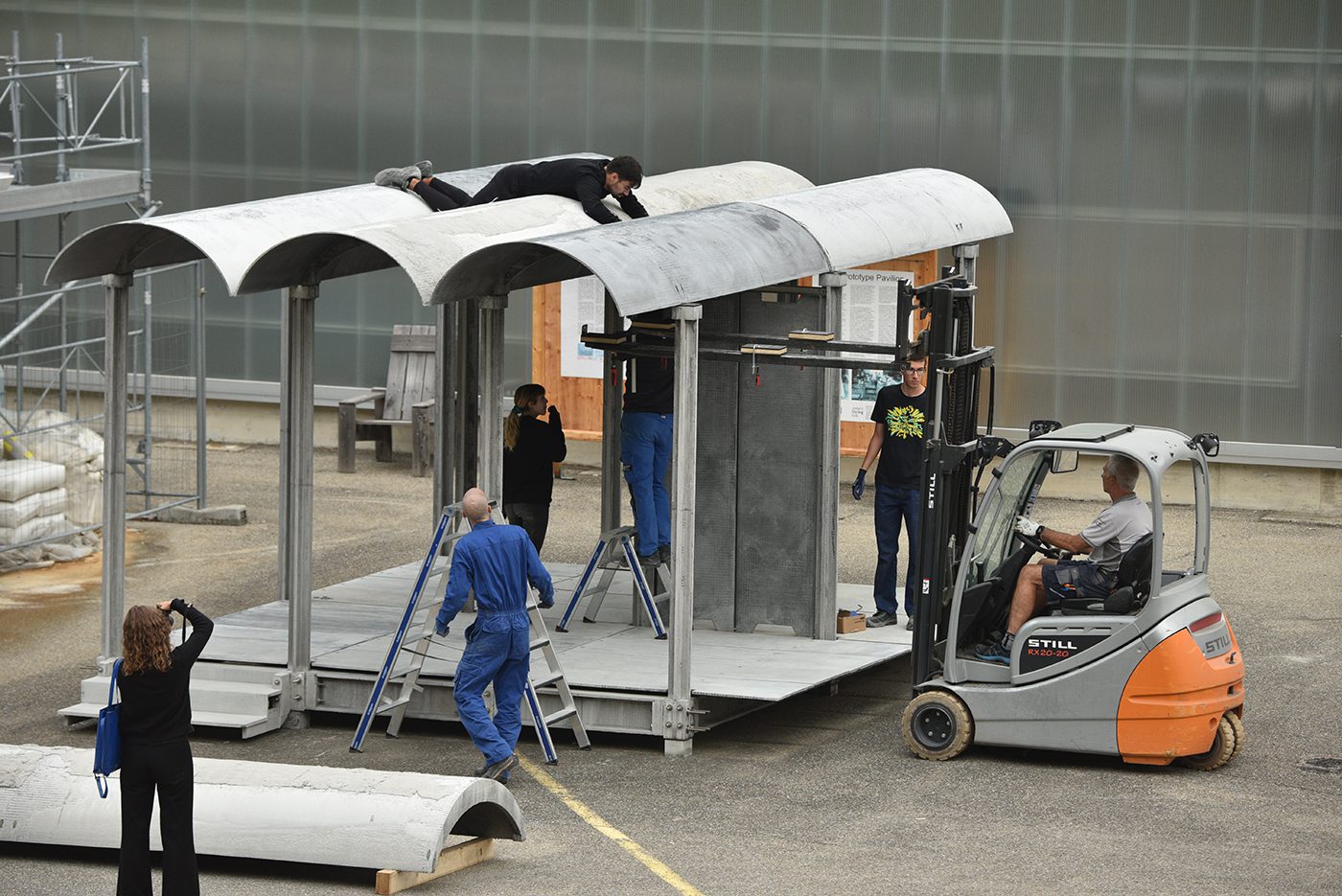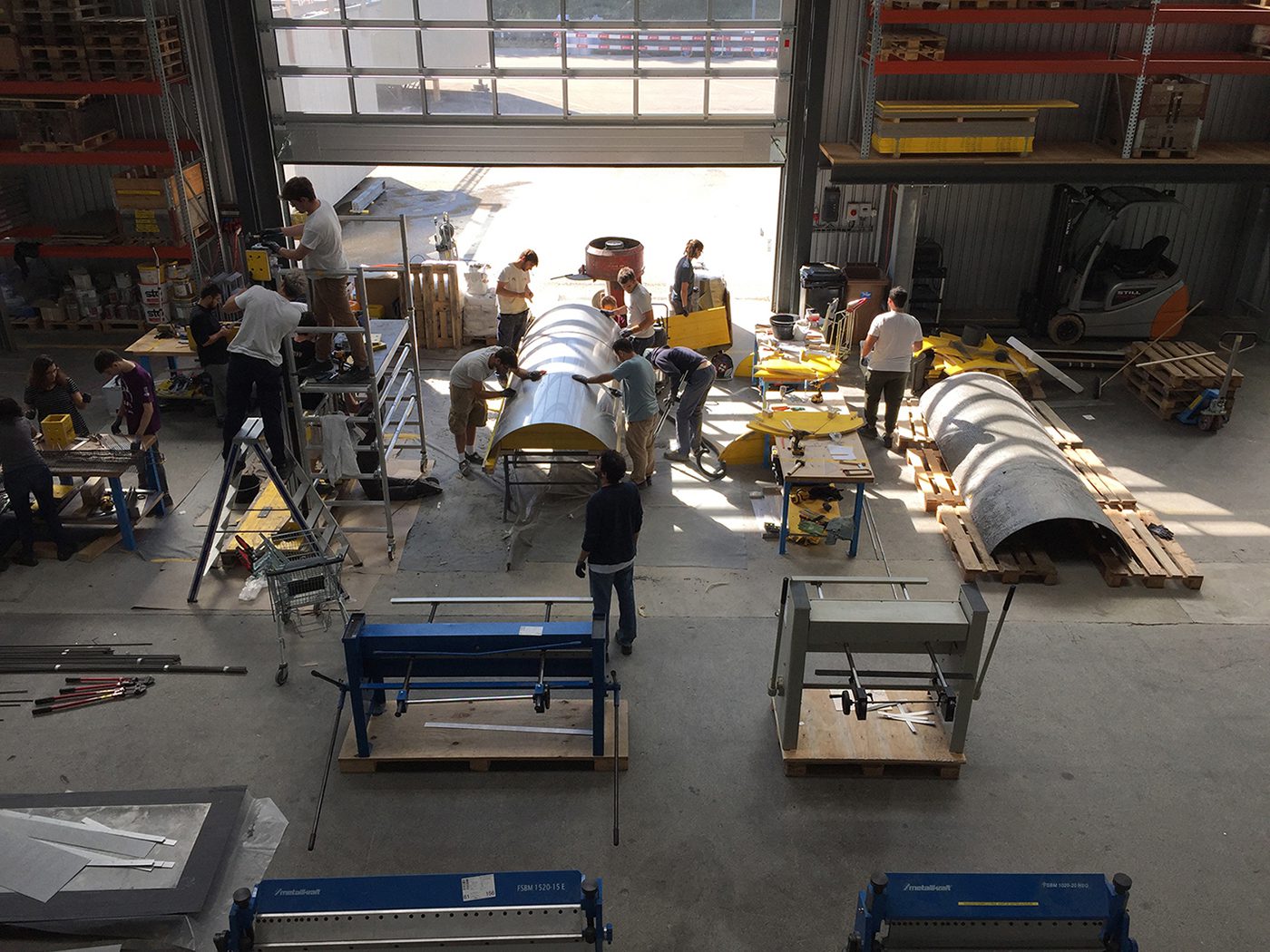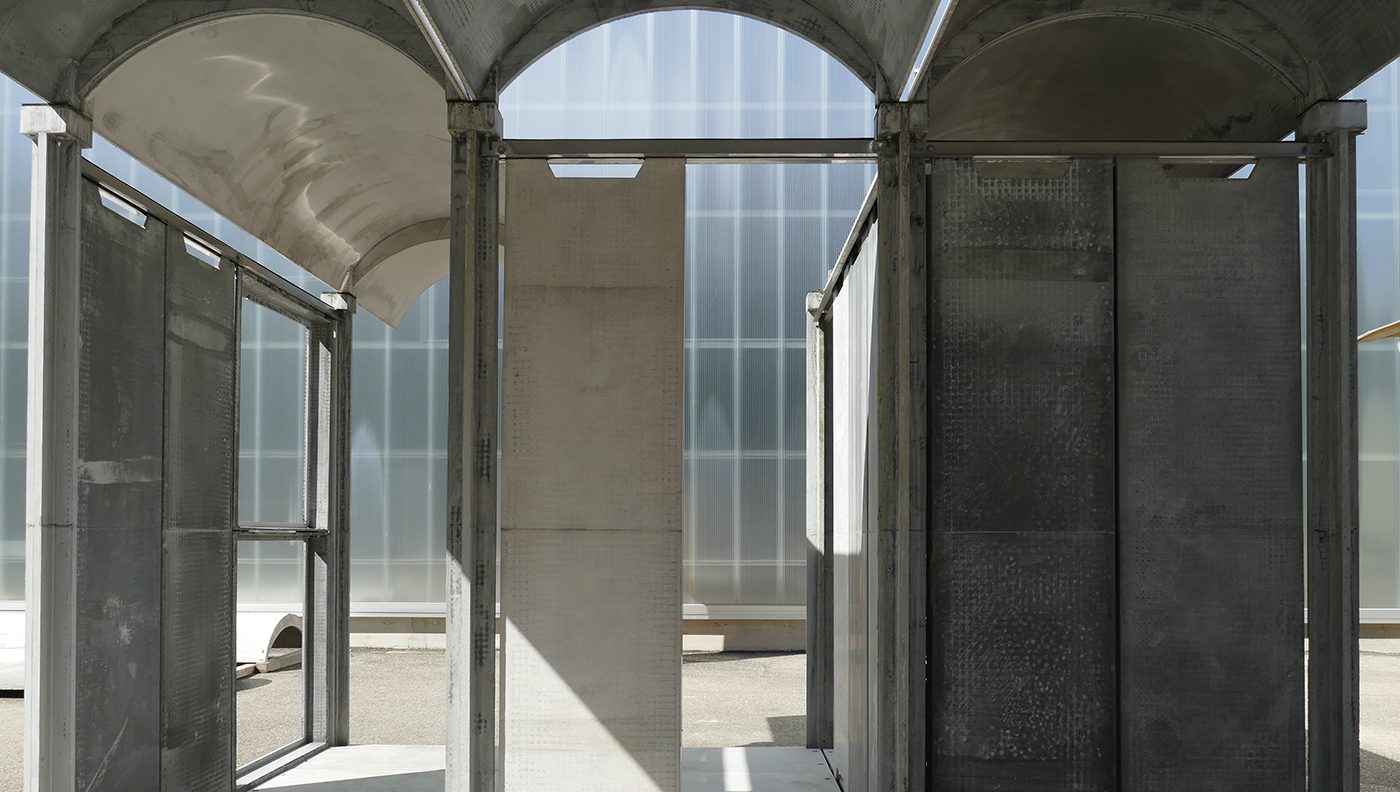Project implementation: Switzerland
Project development: Switzerland, Brazil, Nicaragua
The TRC LC3 Prototype Pavilion, built by EPFL Fribourg students and researchers in collaboration with FAUFBA since 2019, serves as a proof of concept for extensive research into the structural, spatial, tectonic, and social potential of the TRC.
The development of the TRC LC3 Prototype Pavilion has investigated and adapted selected structural elements developed by João da Gama Filgueiras Lima (1932-2014) in ferrocement for textile-reinforced concrete (TRC) combined with LC3 (Limestone Cement and Calcined Clay) since 2022. This fusion of Brazilian industrial knowledge with contemporary research on non-corrosive fiber reinforcement serves as a fundamental concept for the design, mold fabrication, and casting of new slender elements in textile-reinforced concrete, forming the conceptual basis of the TRC LC3 Prototype Pavilion. The pavilion's construction is modular and designed for easy disassembly, primarily aimed at testing and demonstrating innovative and sustainable construction techniques.
The TRC LC3 Pavilion is an initial step toward adaptive tectonic systems, a modular construction approach that will undergo further development in the coming years, leading to a new lightweight construction technique. This research foresees several explorations and applications of TRC/LC3 construction on a broader scale.
The full potential of TRC LC3 as a technology for social sustainability will be assessed by analyzing its structural, spatial, and social impacts as a resilient building system in the Latin American context, especially in socially vulnerable areas. This initiative will empower local communities to actively and autonomously participate in the construction of their own social housing and community facilities, using local resources and innovative production methods whenever they deem necessary.
Consequently, the TRC LC3 Pavilion serves as a messenger to promote TRC and LC3 as socially and environmentally sustainable lightweight materials, conveying the idea of viable industrialization in both Central and Latin America, suitable for applications in social housing, urban development, and recycling programs.




